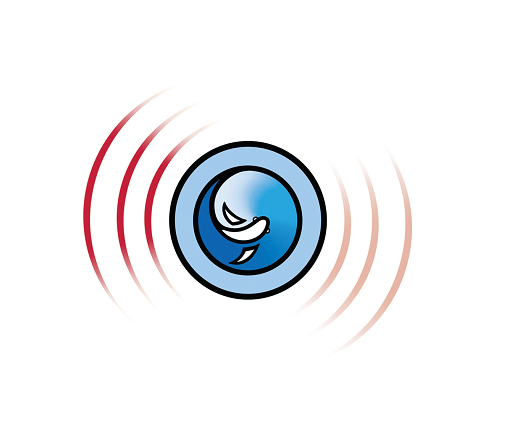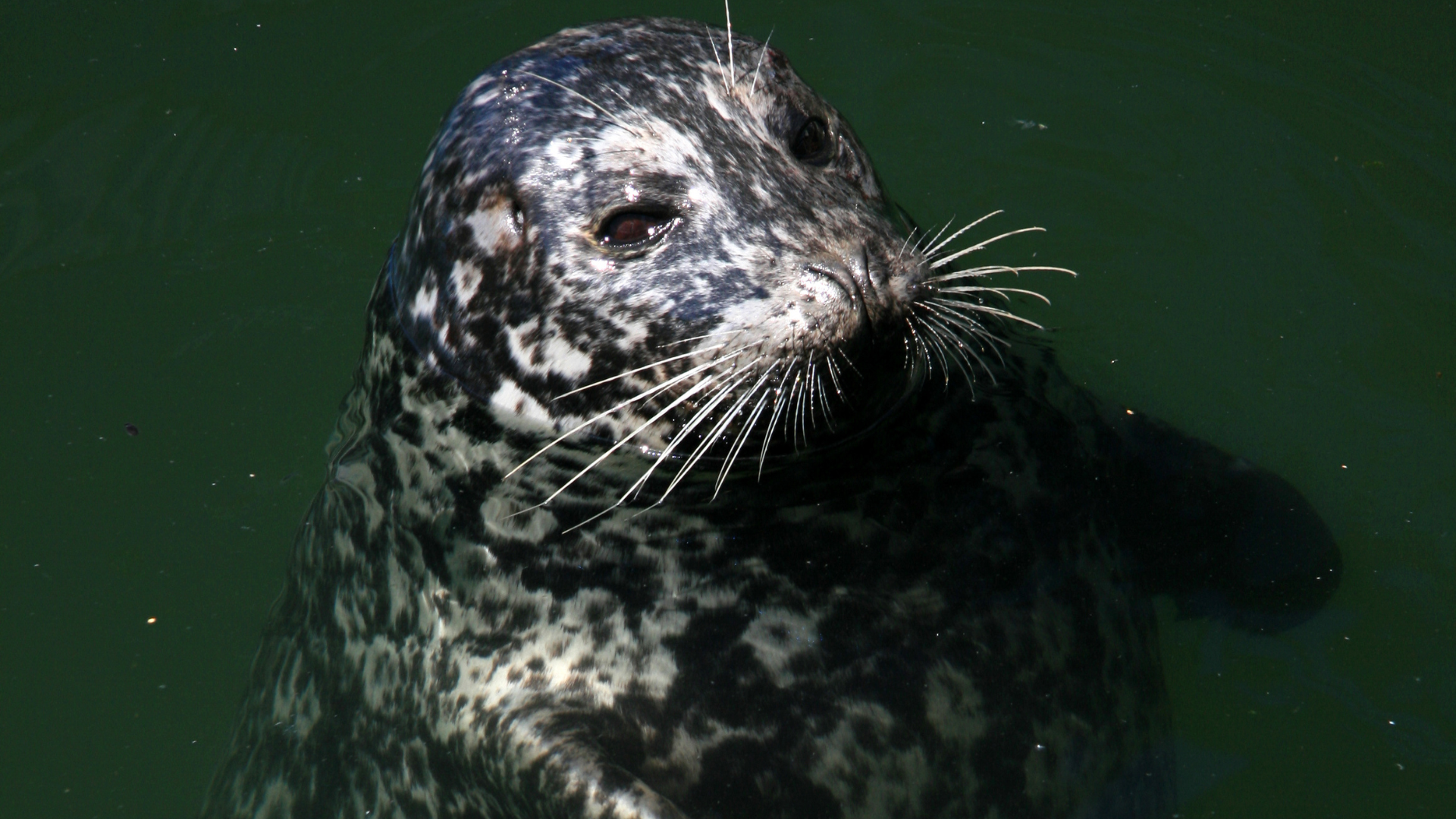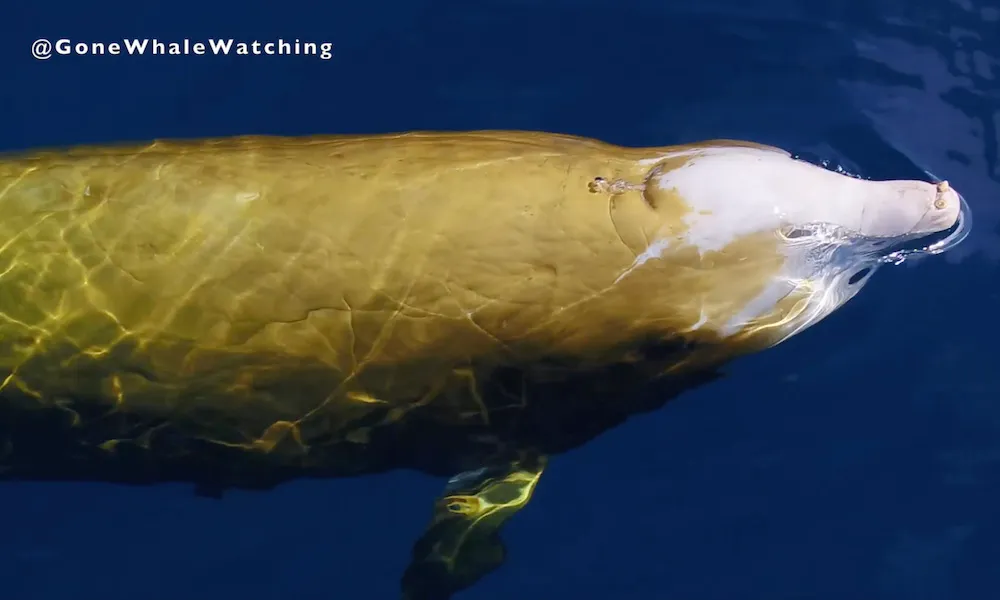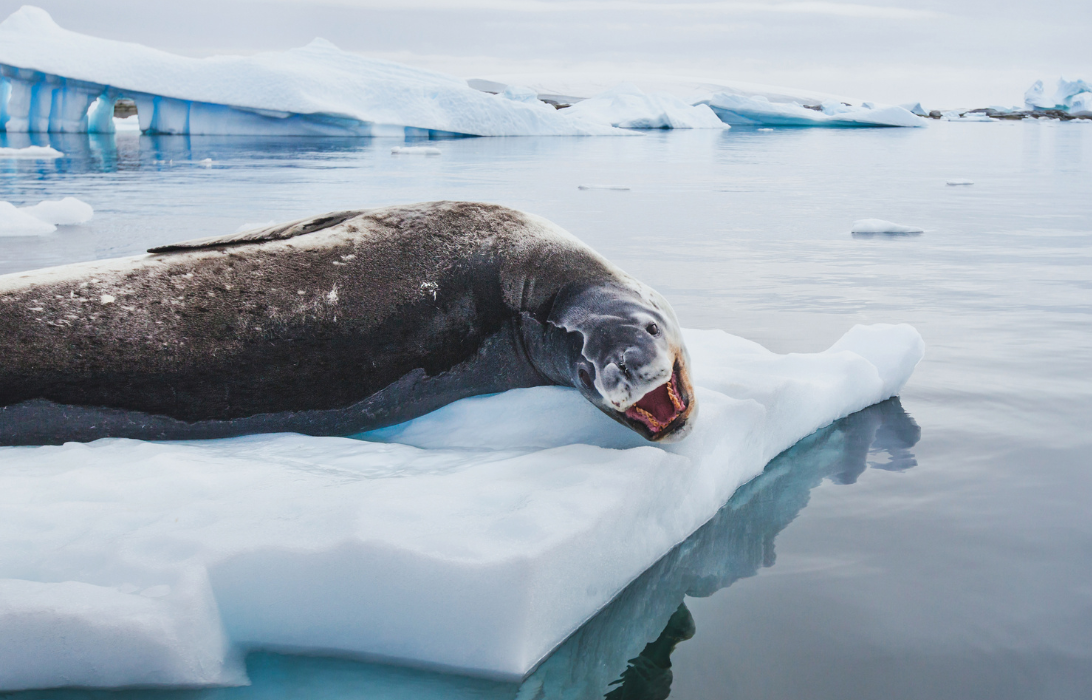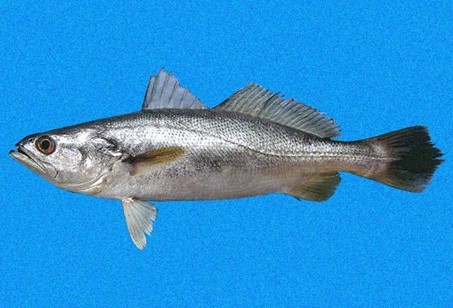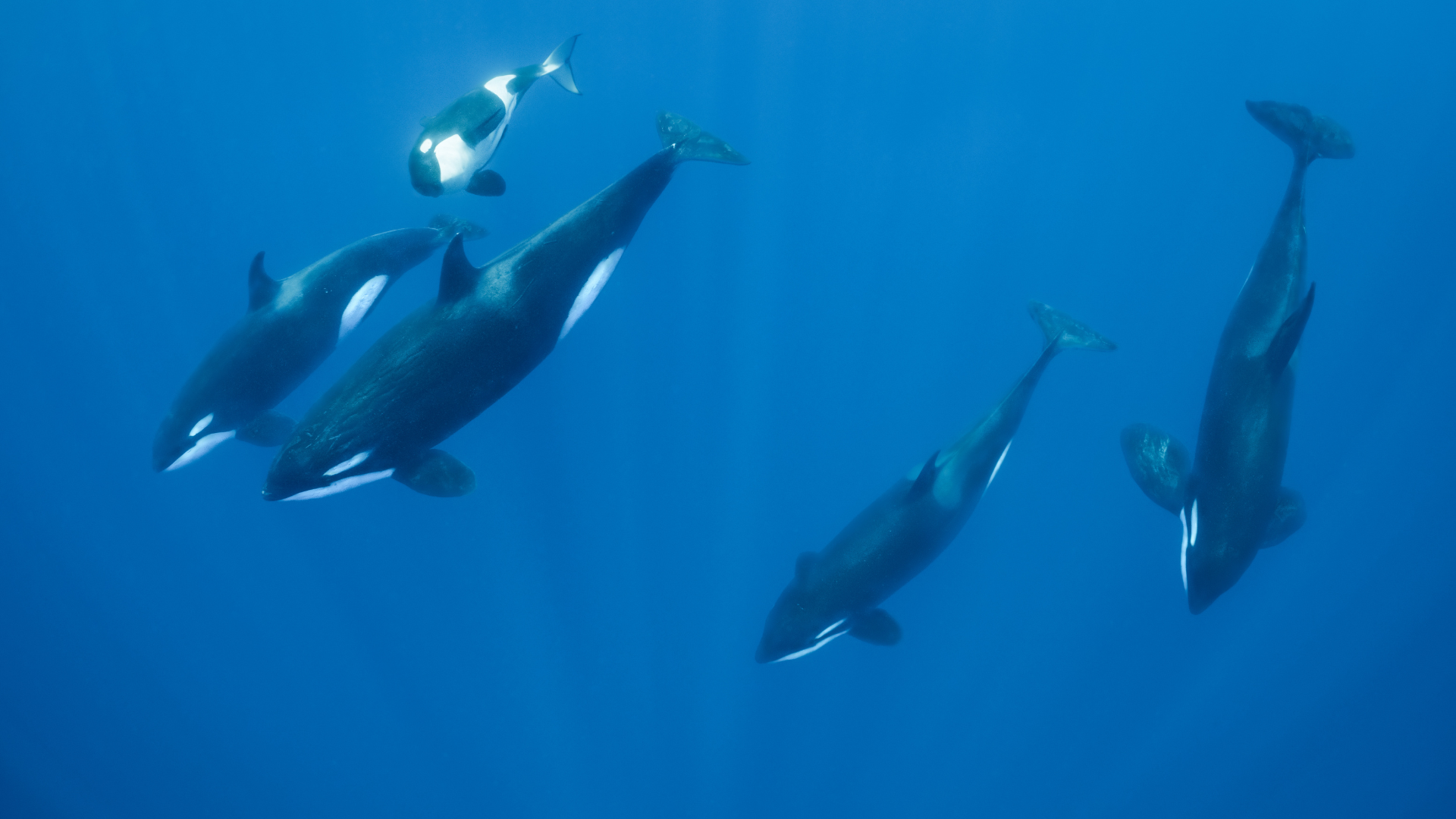Pilot Whale Sounds
Pilot whales are the second largest member of the dolphin family, after orcas. Their communication is a rich tapestry of sounds, each serving a unique purpose in their daily lives. Echolocation clicks act as their guiding light in the deep, aiding them in their search for food. Whistles and burst pulses serve as their language, allowing them to maintain contact with their pod members. The complexity of their phonations is a testament to their intelligence, changing and adapting based on their behavior.
Listen for yourself in the audiographs below!
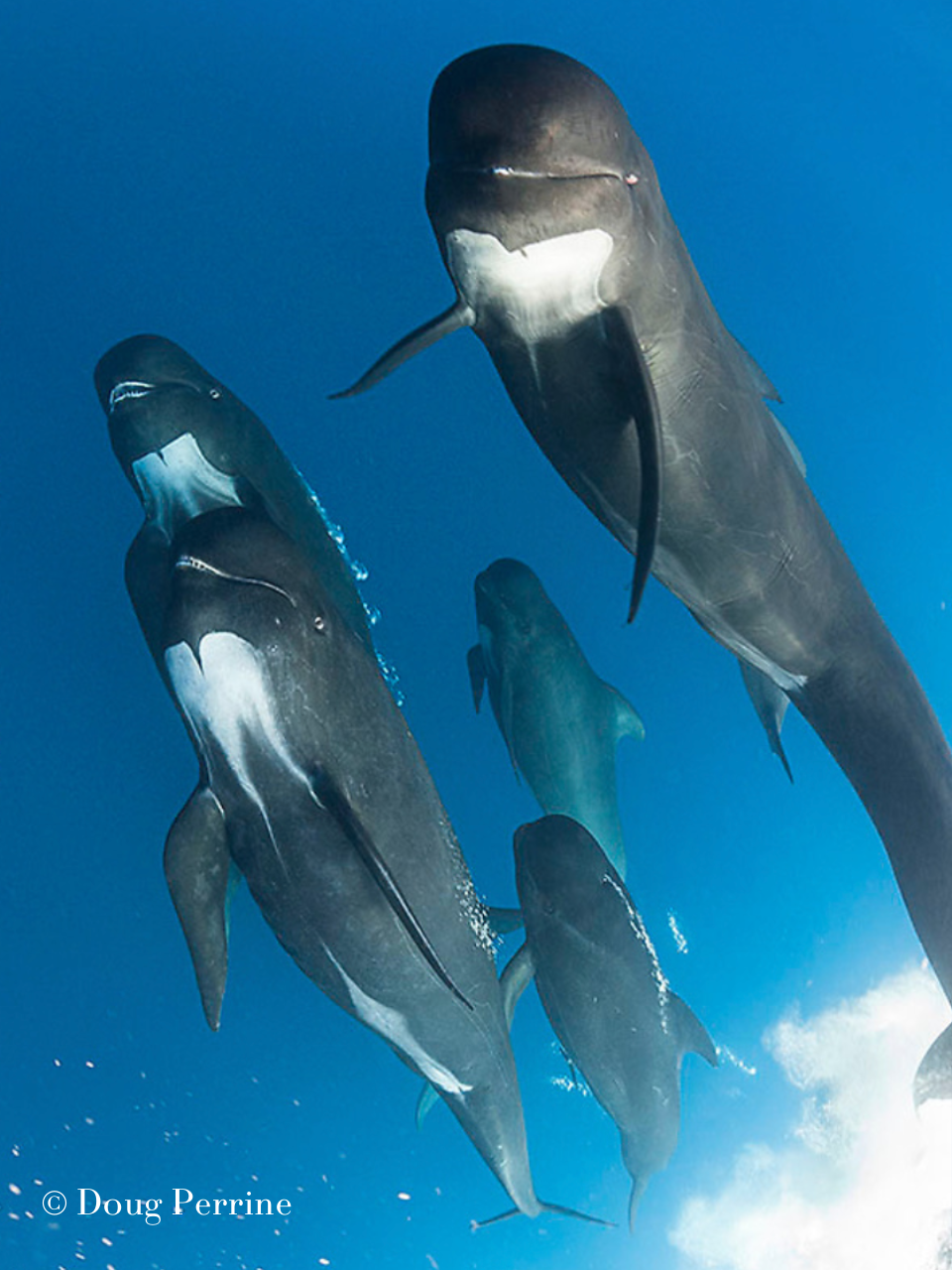
Pilot Whale Sounds
Pilot whales are the second largest member of the dolphin family, after orcas. Their communication is a rich tapestry of sounds, each serving a unique purpose in their daily lives. Echolocation clicks act as their guiding light in the deep, aiding them in their search for food. Whistles and burst pulses serve as their language, allowing them to maintain contact with their pod members. The complexity of their phonations is a testament to their intelligence, changing and adapting based on their behavior.
Listen for yourself in the audiographs below!
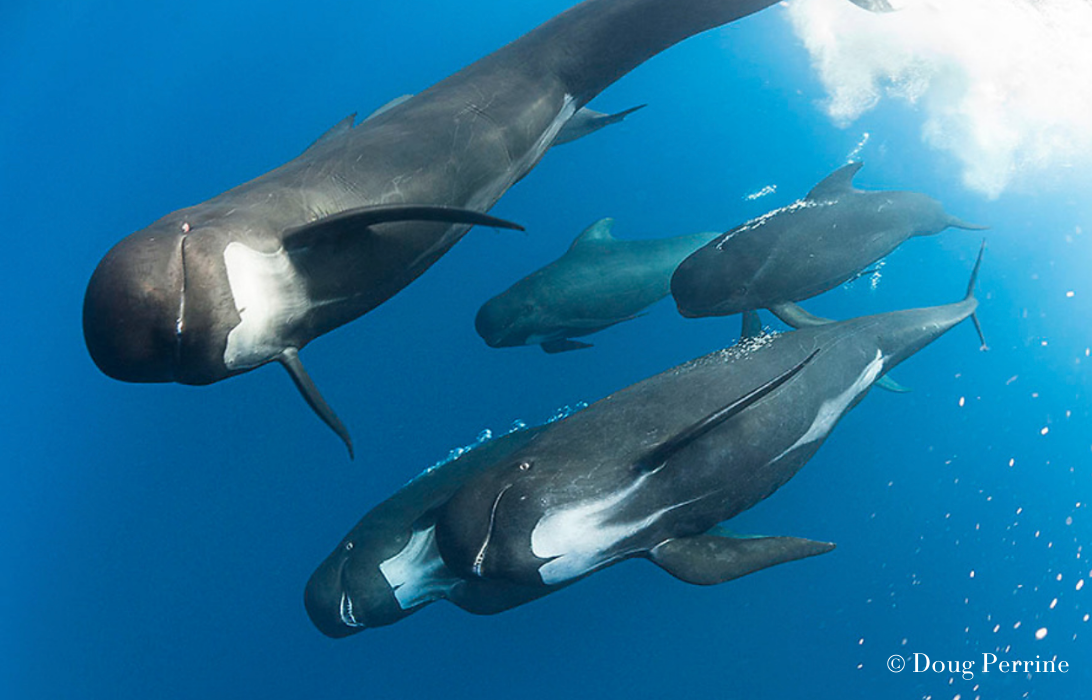
Pilot Whale Facts
LATIN NAME 1. Globicephala melas (Long-finned pilot whales), 2. Globicephala macrorhynchus (Short-finned pilot whales)
LENGTH Adult long-finned pilot whales reach a body length of approximately 6.5m (21.3 ft), with males being 1m (3.2 ft) longer than females. Short-finned adult female pilot whales reach a body length of about 5.5m (18 ft), while males reach 7.2m (23.6 ft)
WEIGHT Adult male long-finned can reach 2,300 kg (5,070 lb) and females can reach 1,300 kg (2,866 lb). Adult short-finned can weigh up to 3,200 kg (7,054 lb)
LIFETIME About 45 years in males and 60 years in females for both species
PHYSICAL TRAITS Pilot whales are mostly dark gray, brown, or black, but have some light areas such as a gray saddle patch behind the dorsal fin. Long-finned and short-finned pilot whales are so similar, it is difficult to tell the two species apart.[1] They were traditionally differentiated by the length of the pectoral flippers relative to total body length and the number of teeth.
BEHAVIOR Pilot whales emit echolocation clicks for foraging and whistles and burst pulses as social signals (e.g. to keep contact with members of their pod). With active behavior, vocalizations are more complex, while less-active behavior is accompanied by simple vocalizations. Differences have been found in the calls of the two species. Compared with short-finned pilot whales, long-finned pilot whales have relatively low-frequency calls with narrow frequency ranges. Pilot whales have strong group fidelity, which may account for their occasional mass strandings. One speculation is that the pod might follow a sick or wounded group member into a stranding.
HABITAT The long-finned pilot whale prefers slightly cooler waters than the short-finned, and is divided into two populations. Pilot whales can be found in oceans nearly worldwide. Long-finned pilot whales can dive to depths of about 2,000 feet for 10 to 16 minutes.
LOCATIONS Chile, Argentina, South Africa, Australia, New Zealand, United States, Azores, Morocco, Greenland, Iceland, northern Norway and the Mediterranean.
FOOD Short-finned pilot whales feed mainly on squid, but they may also feed on octopus and fish. Long-finned pilot whales feed on fish (e.g., cod, dogfish, hake, herring, mackerel and turbot), cephalopods (e.g., squid and octopus) and crustaceans (e.g., shrimp). Most feeding occurs at night in deep water between depths of 650 and 1,650 feet.
PREDATORS Pilot whales, given their large size, face few natural predators. While there is evidence the orcas occasionally prey on pilot whales, the interactions between these species can be complex and are not yet fully understood. Humans are the main threat to pilot whales, particularly hunting in the Faroe Islands, Japan, Indonesia, and some Caribbean countries.


